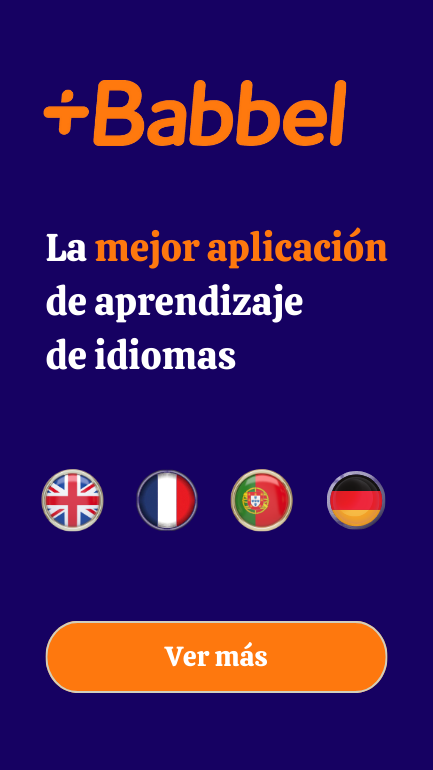Table of contents
The English lexicon, a vast and intricate tapestry of words, has long intrigued scholars and linguists alike. Its sheer breadth and depth, encompassing everything from the archaic and esoteric to the modern and colloquial, makes the task of quantification a formidable one. The objective precision required to tally the totality of its parts confronts a dynamic and fluid linguistic landscape, where words are born, altered, and sometimes forgotten in the span of a few generations. This discourse seeks to illuminate the mechanisms by which language experts attempt to enumerate the words of English, the benchmarks for their counting, and the philosophical considerations that underpin what constitutes a word. As we consider the implications of this enumeration on our understanding of language and communication, one must ponder the nature of linguistic evolution and the forces that drive the English language to continually redefine its boundaries.
Key Takeaways
- Estimating the total number of words in the English language is a challenging task due to the continuously evolving and expanding nature of the language.
- Dictionaries play a role in defining the word count, but their word lists may not fully encapsulate the extent of the language.
- Technology, social media, and cultural trends have led to the creation of new words (neologisms) that contribute to the overall word count of English.
- Historical borrowing from other languages and the evolution of existing words have significantly increased the breadth of English vocabulary over the centuries.
Estimating the English Vocabulary: A Numbers Game
In the quest to quantify the vast English lexicon, linguists grapple with numerous challenges, from defining what constitutes a word to navigating the ever-evolving nature of language itself. The primary difficulty lies in establishing criteria for inclusion in the lexical count. Words in the English language are not static entities; they are born, transformed, and sometimes fall into disuse. Each of these stages presents its own set of counting complexities.
When considering what to count as a word, linguists must decide whether to include different forms of a word (inflections), technical jargon, slang, and even neologisms that have yet to gain widespread acceptance. Furthermore, the English language is rife with compound words, phrases that function as single semantic units, and borrowed terms from other languages, all of which blur the boundaries of what is considered a single word.
To complicate matters, no single authoritative source exists that can claim a complete catalog of the language. Dictionaries vary in the breadth of words they cover, often reflecting the lexicographical philosophy of their compilers rather than the full expanse of the language. Even the largest dictionaries exclude words deemed too obscure, specialized, or ephemeral for inclusion.
Given these variables, estimates of the size of the English vocabulary vary widely, with some sources suggesting there are hundreds of thousands of words, while others propose over a million. However, such numbers should be viewed with caution. They are not definitive tallies but rather snapshots of a linguistic landscape in constant motion. Understanding this, one begins to appreciate the complexities involved in quantifying a language as rich and dynamic as English.
The Role of Dictionaries in Defining the Word Count
Dictionaries play a pivotal role in shaping our perception of the English language’s word count, yet their selective criteria reveal only a fraction of its lexical richness. The process of dictionary compilation involves rigorous selection based on factors such as usage frequency, geographical spread, and historical longevity. Lexicographers scrutinize a vast corpus of written and spoken texts to determine the words that merit inclusion. Consequently, this methodological approach, while systematic, inherently limits the word count to those terms that meet the established criteria.
Dictionaries are traditionally viewed as authoritative repositories of a language, but they are not exhaustive archives. Their purpose is to provide a practical and relevant tool for language users, which means they often exclude obsolete terms, highly specialized jargon, and emerging neologisms that have not yet gained widespread acceptance. These exclusions are significant because they represent the dynamic and evolving nature of English, a language that constantly absorbs new words from diverse sources including technology, pop culture, and scientific discovery.
Moreover, the word lists in dictionaries do not account for the full spectrum of linguistic creativity and variation. Slang, idioms, and regional dialects often remain underrepresented. This is partly due to the challenge of capturing and standardizing fluid and context-dependent expressions. The dictionary’s snapshot of the language, while invaluable, is therefore just one perspective on the immense and multifaceted entity that is the English lexicon.
In essence, dictionaries offer a conservative estimate of the word count, one that provides a useful but incomplete picture of English’s true expanse. For those seeking to comprehend the full scope of the language, dictionaries are a starting point, not the final word.
The Impact of Technology and Neologisms on English
The digital era has ushered in an unprecedented proliferation of neologisms, reflecting the rapid evolution of technology and its pervasive influence on the English language. New words and phrases are constantly being coined to describe the latest innovations, social media trends, and digital phenomena. These neologisms become part of everyday vocabulary, underlining the adaptability and expansiveness of English.
The creation of neologisms is not just a linguistic novelty; it serves a practical purpose in enabling succinct communication about complex technological concepts. Terms like “selfie,” “hashtag,” and “cryptocurrency” emerged out of necessity, as new tools and behaviors took shape in the digital landscape. Additionally, technology has facilitated the spread of these terms at an extraordinary pace, further embedding them into the language.
Here’s a glimpse into how neologisms and technology are intertwined:
| Neologism | Technological Influence |
|---|---|
| Blog | Merging of ‘web’ and ‘log’, representing online journals. |
| Emoji | Japanese origin, pictographs used in digital communication. |
| Phishing | A play on ‘fishing’, indicating deceitful online data capture. |
| App | Shortened from ‘application’, now a staple in mobile tech. |
As these examples illustrate, technology does not merely add words to the lexicon; it shapes the way we communicate and conceptualize the world. The continual introduction of neologisms is a testament to English’s capacity to evolve and to the critical role of technology in driving linguistic change. Understanding this dynamic relationship is key for anyone wishing to grasp the current and future landscapes of the English language.
Historical Linguistic Expansion: Borrowing and Word Evolution
Building on the neologisms introduced by technological advances, English has also been shaped extensively by its propensity to borrow from a multitude of other languages, leading to a significant evolution of its vocabulary over time. This linguistic borrowing is a historical phenomenon, reflecting centuries of cultural interactions, trade, conquest, and colonization.
The English language, with its roots in Anglo-Saxon and Old Norse, began absorbing words from Latin and French with the Norman Conquest of 1066. This historical event marked the beginning of a profound influence on the English lexicon, contributing significantly to its diversity. The Renaissance period further expanded English vocabulary through the rebirth of learning and the rediscovery of ancient texts, prompting the adoption of many Greek and Latin terms.
Moreover, the Age of Exploration exposed English speakers to numerous foreign cultures, resulting in the assimilation of words from languages around the globe. Terms like ‘kangaroo’ and ‘chocolate’ entered English from indigenous languages of Australia and the Americas, respectively. The British Empire’s global reach in the 19th and 20th centuries further facilitated linguistic borrowing from African, Asian, and other languages.
As English has evolved, it has also transformed existing words, giving them new meanings or usages. For example, the word ‘nice’ once meant ‘foolish’ in Middle English but has come to mean ‘pleasant’ or ‘agreeable’ in modern usage. This semantic shift is part of the natural evolution of language, influenced by societal changes, cultural trends, and linguistic creativity.
The borrowing and evolution of words are instrumental in the historical linguistic expansion of English, showcasing the language’s dynamic nature and its capacity to adapt and grow through various cultural and historical influences.
Technical Jargons and Specialized Lexicons
Specialized vocabularies, known as technical jargons, emerge from various professions and academic disciplines, significantly contributing to the expansion of the English lexicon. Each field, whether it be medicine, law, engineering, or computer science, develops its own set of terms to convey complex concepts succinctly among experts. This specialized language allows for precise communication, essential for advancing knowledge and fostering innovation within these domains.
The proliferation of technical jargon is not merely an academic exercise; it reflects the evolution and diversification of expertise in a rapidly progressing society. As new technologies and methodologies emerge, so too does the terminology to describe and interact with them. This phenomenon is not static; as certain practices become obsolete, their associated jargon may fade from common use, while other terms persist and occasionally cross over into everyday language.
Compiling these specialized lexicons poses a unique challenge for lexicographers and linguists. Deciding which terms merit inclusion in general dictionaries requires careful consideration of their usage beyond the confines of their specific fields. The dynamic nature of technical jargons also means that dictionaries must be frequently updated to reflect current knowledge.
Understanding technical jargons is crucial for professionals to communicate effectively within their fields; however, it can also act as a barrier to outsiders. Efforts to demystify jargon and promote clear communication are essential, particularly in interdisciplinary contexts where collaboration is key.
Slang, Idioms, and Colloquial Expressions in English
While technical jargons reflect the precision required in professional contexts, slang, idioms, and colloquial expressions offer a window into the more informal and creative aspects of the English lexicon. These forms of language are not just informal or non-standard; they are also indicative of cultural identity, social dynamics, and linguistic innovation. Slang words often capture the zeitgeist, becoming lexical snapshots of particular moments in time. Idioms, on the other hand, are fixed expressions with meanings that are not deducible from the literal interpretations of the words they contain. Colloquialisms are informal words or phrases that are commonly used in casual conversation.
The fluidity of these linguistic elements makes them both fascinating and challenging to quantify. Unlike the static entries found in dictionaries, slang, idioms, and colloquial expressions are in constant flux, with new terms arising and old ones falling out of usage. They enrich the language, providing speakers with nuanced and expressive ways to communicate feelings, thoughts, and experiences.
To illustrate the diversity of informal English, consider the following table:
| Slang Term | Idiom | Colloquial Expression |
|---|---|---|
| Ghost (v.) | Kick the bucket | Gonna (Going to) |
| Salty (adj.) | Spill the beans | Y’all (You all) |
| Lit (adj.) | Hit the hay | Nope (No) |
| Thirsty (adj.) | Piece of cake | Kiddo (Child) |
| Flex (v.) | Break the ice | Bummer (Disappointment) |
Each entry in the table encapsulates a unique aspect of the language’s adaptability and cultural relevance. While these words and phrases may not always be found in traditional word counts, they remain an essential part of the living, evolving entity that is the English language. As such, they merit recognition and study within the expansive lexicon of English.
The Dynamics of Word Usage: Frequency and Obsolescence
The frequency with which certain words are used plays a crucial role in shaping the English lexicon, influencing which terms become fixtures of the language and which are relegated to obsolescence. This dynamic process reflects the constant evolution of society, as words are often born out of necessity and fade when they no longer serve a purpose or when cultural contexts change.
Lexical frequency is largely determined by the relevancy of concepts and objects in daily life. High-frequency words are those that are essential for basic communication, such as function words (e.g., “the,” “is,” “and”) and common verbs (“go,” “do,” “make”). They maintain a steadfast presence in the lexicon due to their indispensable role in sentence structure and meaning.
Conversely, words tied to specific technologies, social practices, or cultural phenomena may fall into disuse and become archaic as those elements lose significance. The obsolescence of words like “floppy disk” or “phlogiston” is a testament to this pattern. As society progresses, new terms emerge, adding to the vast tapestry of English, while others become linguistic artifacts of their time.
Scholars track these changes through corpus analysis, which examines large bodies of text to identify trends in word usage. This empirical approach provides insights into the vitality of words and their trajectories within the language. Understanding these dynamics is critical for linguists, lexicographers, and educators as they navigate the expansive and fluid landscape of English vocabulary. It allows for a more accurate representation of the language as it is actively used, ensuring that dictionaries and educational resources remain relevant and reflective of contemporary usage.
The Open-Ended Growth of English: What the Future Holds
As society continues to evolve, so too does the English language, with the potential for inexhaustible growth and the creation of new words that reflect emerging cultural and societal norms. The future of English is one of continuous expansion as it adapts to new realities. This growth can be seen as a natural consequence of several key factors:
- Technological Advancements: The rapid pace of innovation in technology introduces new concepts requiring novel terminologies. As we develop artificial intelligence, explore space, and enhance virtual realities, English will likely coin terms to express ideas and objects that do not currently exist.
- Cultural Exchanges: Globalization facilitates the cross-pollination of languages. English, with its history of borrowing from other tongues, will continue to absorb and integrate words from diverse cultures, reflecting an increasingly interconnected world.
- Societal Changes: As we encounter shifts in societal values and norms, language will evolve to encapsulate these changes. Issues like climate change, social justice, and identity politics will shape the lexicon, giving rise to terms that encapsulate new ways of thinking and being.
The English language, therefore, stands on the precipice of uncharted lexical territory. With each passing year, the collective creativity of English speakers, alongside the relentless pace of global change, guarantees the introduction of fresh expressions into our daily vernacular. While it is impossible to predict exactly which words will enter the language, it is certain that English will continue to reflect the human experience in all its richness and diversity. The only constant in the journey of English is change itself, ensuring that the language remains as dynamic and vibrant as the ever-evolving world it describes.
Frequently Asked Questions
How Do Cognitive Scientists Measure and Understand the Vocabulary Size of Individual Speakers, as Opposed to the Entire English Language?
Cognitive scientists assess individual vocabulary sizes through various tests that gauge word recognition and recall abilities. These evaluations often include frequency lists to estimate passive vocabulary and active production tasks for assessing spoken or written word use. Such methodologies aim to understand language proficiency levels, learning processes, and the cognitive mechanisms underlying language acquisition and usage, providing insights into the linguistic capabilities of individual speakers.
What Role Does the English Language Play in Global Communication and Diplomacy, and How Does This Influence the Adoption of English Words Into Other Languages?
The English language serves as a pivotal tool in global communication and diplomacy, fostering international dialogue and cooperation. Its widespread use accelerates the assimilation of English terminology into various languages, reflecting English’s influence across cultures. This linguistic osmosis not only enriches other lexicons but also underscores the dynamic nature of language as it adapts to the demands of global interaction and the exchange of ideas.
How Do Multilingual Individuals Affect the English Lexicon When They Code-Switch or Introduce Loanwords From Their Native Tongues?
Multilingual individuals influence the English lexicon through code-switching and the introduction of loanwords from their native languages. This interchange enriches English by adding cultural nuance and expanding its expressive capacity. As speakers alternate between languages or blend them, they often fill lexical gaps or convey concepts more effectively, thus contributing to the language’s evolution and diversity. This process reflects the dynamic nature of English as a global lingua franca.
In What Ways Do English Language Teaching Methodologies Around the World Contribute to the Spread and Adaptation of English Vocabulary?
English language teaching methodologies globally contribute to the spread and adaptation of vocabulary by standardizing certain terms while also accommodating regional variations. Instructional practices expose learners to a core lexicon, yet also integrate local vernacular, idiomatic expressions, and cultural nuances. This dual approach both unifies English speakers and embraces linguistic diversity, ensuring the language’s continual evolution and increased richness as it is adopted in various cultural contexts.
How Do Trademarked Brand Names and Proprietary Terms Affect the Use and Recognition of Certain Words in the English Language, and Are They Accounted for in Vocabulary Size Estimations?
Trademarked brand names and proprietary terms often enter common usage, influencing the recognition and use of certain English words. However, their inclusion in vocabulary size estimations varies. Some linguists argue they reflect language evolution and should be counted, while others exclude them due to their commercial nature. The debate highlights complexities in determining the boundaries of a language’s lexicon, as commercial language intertwines with everyday speech.
Conclusion
In conclusion, the English lexicon is a dynamic construct, continuously molded by societal shifts, innovation, and cross-cultural exchange. Efforts to enumerate its totality face inherent complexities, yet underscore the language’s vastness and adaptability. As dictionaries catalog existing terms and neologisms arise, English perpetually evolves. The interplay of frequency, obsolescence, and the emergence of new expressions ensures that the language’s growth remains an open-ended phenomenon, reflective of its speakers’ experiences and the ever-changing world around them.







